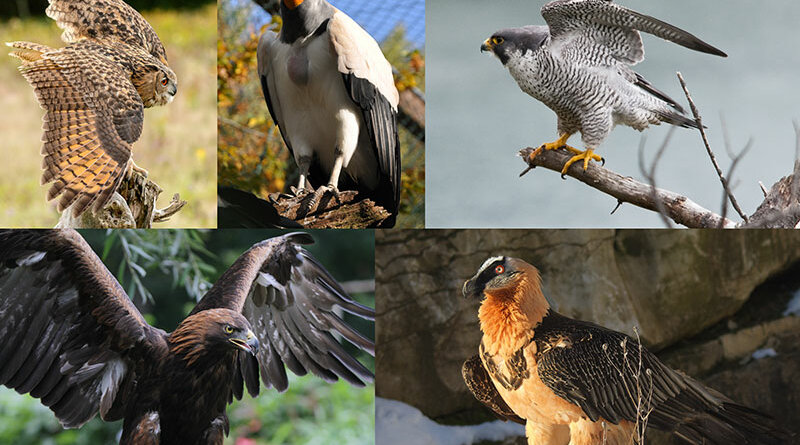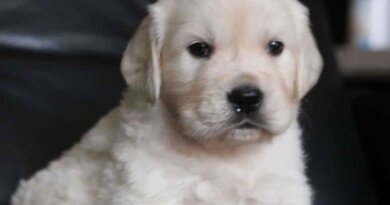Protect Your Dog from Hawks and Other Birds of Prey
Hawks, owls and other raptors (birds of prey) don’t know the difference between a pet dog and, say, a rabbit or a rat. To them, they’re all on the menu. Learn how to keep you dog out of their talons and safely on the ground.
While hawks and other raptor attacks on humans are quite rare, their attacks on pets—including dogs—are far more common. Sadly, most people learn this by losing a pet to one of these hunters from the sky.
My friend Dave lives in an upscale neighborhood nestled amongst a dense stand of mature Ponderosa pine trees. One late summer evening, Dave, his wife, Sushi (their eight-pound Pomeranian), and another couple took a walk in the woods. Chit-chatting as close friends do, they were absorbed in their conversation, making for an enjoyable evening.
From the corner of his eye, Dave saw a shape streaking toward them, and before he could react, Sushi let out a scream as a great horned owl grabbed and lifted her into the air. The dog’s leash was pulled from Dave’s hand, and he watched helplessly as the owl carried Sushi toward some trees. The owl may have misjudged the dog’s weight; it dropped her before reaching the forest, killing Sushi.
GET THE BARK IN YOUR INBOX!
Sign up for our newsletter and stay in the know.
On August 12, 2013, in Beech Island, S.C., William Grace was awakened from his nap by the terrifying scream of his 10-year-old Pomeranian, Tee. Grace ran out of his house and into his back yard to find a large hawk attacking his 10-pound dog. He wanted to kill the bird, but raptors are federally protected, so all he could do was chase the bird away and bury his buddy.
Dogs weighing as much as 60 pounds are on record as having been attacked by raptors (birds of prey). Though the instances of pets killed by raptors are uncommon, it happens often enough that it’s worthwhile to take precautions.
Any pet under 20 pounds is at serious risk from birds whose natural prey generally includes rodents, birds, rabbits, snakes and insects. Hawks and their raptor cousins are opportunistic animals, so dogs, puppies, cats, kittens, ferrets, guinea pigs, ducks, rabbits and chickens are also on the menu. Fiercely protective of their nests, these formidable birds are also known to attack larger animals, even humans, on occasion.
The Perpetrators
• The great horned owl (Bubo virginianus) is responsible for the highest number of attacks on pets. These birds are common in most habitats, including cities and suburban areas, and are the most familiar owl in the world. Large and aggressive birds, they are masters of camouflage and are nearly silent when they fly. The only time their prey knows one is around is after being attacked. They are usually nocturnal hunters, but can be active in the day during the winter.
• The next most common threat to pets is the northern goshawk (Accipiter gentilis). They are found throughout the northern states, Canada and Alaska, and into the lower states occasionally. They prefer old-growth forests and generally build their nests in large trees by clearings, within a short distance to a lake or river. Beautiful and prized by falconers, these magnificent birds mate for life and will aggressively protect their territory.
• The red-tailed hawk (Buteo jamaicensis) is also notorious. This hawk is widespread and found throughout the Continental US and most of Canada. One reason they are familiar is that they are so adaptable. They thrive in deserts, tundra, grasslands, forests, marshes and suburban areas around the country.
• Other raptors to be wary of include the great gray owl (Strix nebulosa), barred owl (Strix varia), Cooper’s hawk (Accipiter cooperii), and sharp-shinned hawk (Accipiter striatus).
How to Protect Your Dogs and Other Pet Animals
• The most important thing you can do is to stay with them while they are outside. To be an effective deterrent to raptors, you must be visible to the birds, so remain in full view while your dog is playing. Birds will generally leave pets alone when you are standing near them.
• The safest way to leave your dog outside unsupervised is to build a covered pet enclosure. The roof provides shade from the sun, shelter from the rain and protection from raptors, while the fencing keeps them safe from other threats.
• If a fenced and covered run is out of the question, keep your dog under the canopy of a tree or near shrubs, which makes it harder for the bird to attack.
• If possible, take more than one dog at a time to exercise or go potty. Extra animals intimidate the birds.
• Putting up moving, shiny objects in the yard, such as silver streamers, has been known to intimidate these predatory birds.
• If a raptor is frequently attacking songbirds at your feeder, stop feeding the birds for a while and hope the raptor moves to another area.
• And, don’t feed birds that feed on the ground, such as quail, doves, grouse and roadrunners; doing so could attract aerial hunters.
• Feed your pet indoors and clean up any leftover food that might attract mice, squirrels or rats, frequent targets of predators.
• For those who take their pets on hikes or other outdoor activities, talon-proof vests are available online.
• Try to avoid areas where raptors are known to hunt when walking or exercising your pet.
Understand that all raptors are protected under the Migratory Bird Treaty Act, which makes it illegal to injure, capture or kill them, or to disturb their nests or offspring. Protecting pets is not a justifiable excuse for harming a raptor, and you may be subject to severe fines or jail time or both.
While this article focuses on protecting your pet from raptors, following the above steps can help protect them from other dangers as well, including coyotes, foxes, bears and other dogs, not to mention busy streets and evil-intentioned humans.
Even though they aren’t common, bird attacks on pets happen. Following the above tips will help protect your pets and allow you to enjoy time with them outside.


